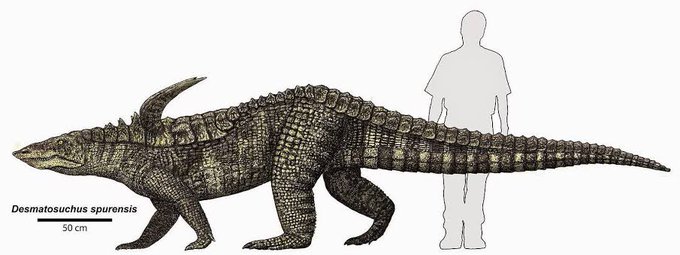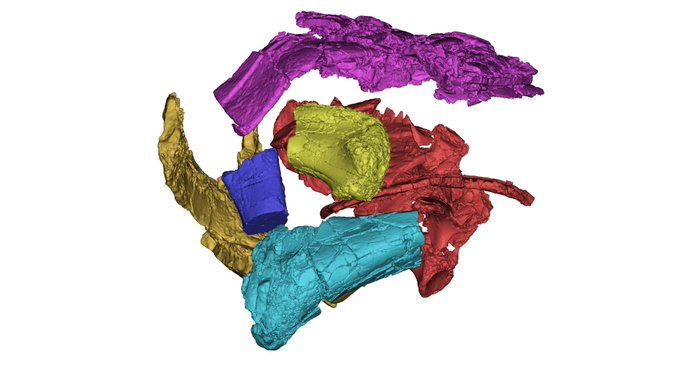aetosaurのTwitterイラスト検索結果。 12 件
@FYutyrannus @goji_jay Anguirus as an aetosaur by @LuckyOnions is something I think you would like
Yay #FossilFriday! N is for Neoaetosauroides, an #aetosaur from the L #Triassic of Argentina. Recently Taborda et al. used FEA to support possible zoophagy/omnivory, previously proposed by Desojo, & by von Backzo et al. https://t.co/6YtiXhaL55 #Croctober #AtoZCrocs #StemCroctober
Thrilled to have this new article in @AnatRecord out today! Aetosaur brain endocasts w/ great collaborators led by Belén von Baczko & Julia Desojo. #Paleoart by @victorleshyk
Ryan Ridgely & I first scanned these @ucmpberkeley fossils many yrs ago—glad to finally get this out!
New digital braincase endocasts of iconic aetosaur Desmatosuchus and neurocranial diversity in Aetosauria by M. Belén von Baczko, @WitmerLab & colleagues:
https://t.co/2UQLxjOqHA
#Archosauria #Pseudosuchia #crocodilia #fossils #paleontology #Croctober @WileyEcolEvol @AnatomyOrg
@bluebreeze52 @BadCrippIe Depends on what you mean by crocodile. Crocodiles evolved after dinosaurs died out, when the mammals started to take over.
If you mean their extinct relatives & forerunners like Kaprosuchus, Simosuchus, or older stuff like Postosuchus or Aetosaur, the term would be Pseudosuchian
Today’s #Stemcroctober is Desmatosuchus spurensis Case 1921, an aetosaur from the southwest. It was a one of the largest with shoulders spikes measuring ~50 cm. The diet is his unknown, but it could have been the largest herbivore of NA in the L Triassic #Croctober #AtoZCrocs
Got some initial segmentation of part of the early aetosaur Coahomasuchus done for #DAWNDINOS work. Quite a jigsaw to put back into whole skeleton...
Desmatosuchus sp. // @clepsydrops
This heavily armored, 4.5 meter (15 ft) long reptile belongs to a group of plant-eating crocodile relatives called aetosaurs. It is thought that the shovel-shaped snout helped it dig for food.
https://t.co/TFIqoum46r
Desmatosuchus sp. // @clepsydrops
This heavily armored, 4.5 meter (15 ft) long reptile belongs to a group of plant-eating crocodile relatives called aetosaurs. It is thought that the shovel-shaped snout helped it dig for food.
https://t.co/TFIqoum46r
































